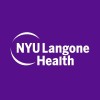
Heterogeneity of Neointimal Healing Following Biodegradable-polymer Drug-Eluting Coronary Stent...
Coronary Heart DiseaseStable Angina Pectoris1 moreThe objective of this study is a comparative evaluation of Orsiro stent and of Resolute Integrity stent in terms of the extent of neointima formation at 4 months after implantation using optical coherence tomography (OCT).

Chronic Total Occlusion Percutaneous Coronary Intervention Study
Chronic Total OcclusionIschemic Heart Disease1 moreThe objective of this study is to evaluate angiographic confirmation of placement of any guidewire beyond the CTO, in the true vessel lumen, in patients undergoing CTO percutaneous coronary intervention (PCI) in which at least one Teleflex guidewire and at least one Turnpike catheter are used.

Clinical and Hospital Stay Effects of Reiki and Manual Therapy After Open Heart Surgery
Coronary Artery DiseasesValvular Heart DiseasesReiki is an energy-based healing therapy using light touch. Manual therapy is a technique using light effleurage. These complimentary healing services are utilized to promote relaxation, sleep, improve emotions, and decrease pain; however, more research is required since sample sizes in the literature were small, subjects were generally healthy (not hospitalized), and subjects had multiple medical backgrounds. Only 1 study focused on cardiac surgery patients. We aim to learn if Reiki and manual therapy enhances postoperative clinical outcomes for patients after first time coronary artery bypass graft (CABG) and/or cardiac valve surgery. A randomized, controlled non-blinded study will enroll a sample of a minimum of 272 patient (136 per group), based on a power analysis using the primary outcome. The intervention group will receive usual care plus Reiki and manual therapy, with Reiki delivered first. Total therapies time is 20 minutes. Reiki and manual therapy will be delivered for 3 consecutive days beginning on the day after endotracheal tube removal. The usual care group will receive 20 minutes of uninterrupted rest, which is part of usual postoperative care. Outcomes are depression, anxiety, pain, night time sleep, new onset atrial fibrillation, hospital length of stay, all-cause 30-day hospital readmissions, narcotic drug burden and post-operative complications.

Evaluation of Cardiac Function With Cardio-respiratory Synchronized MRI
Heart DiseaseThe purpose of this investigation is to evaluate newer methods of performing cardiovascular MRI (CMR) that will provide new kinds of information related to the interplay between the cardiac and the respiratory cycles, such as the interaction between the left ventricle and the right ventricle during respiration . The primary statistical objective is to provide preliminary indications of the relative utility of the investigational imaging software in terms of image quality and suitability for routine clinical use. Image quality will be expressed in terms of signal-to-noise ratios (SNR), contrast-to-noise ratios (CNR) and subjective Likert-type qualitative assessments independently provided by each of multiple blinded readers for each image. Suitability for routine use will be assessed in terms of imaging time and a binary indicator of whether, in the opinion of the investigator, adverse procedural complications (not expected) were encountered during a given imaging session.

T-provisional Stenting vs Mini-Crush in Chronic Total Occlusions (CTO)
Ischemic Heart DiseaseCoronary Atherosclerosis2 moreThe aim is to compare the results of using T-provisional and Mini-Crush stenting techniques in patients with bifurcation lesions in the CTO segment.

Verapamil vs Heparin in Transradial Procedures
Heart DiseaseIschemicTransradial approach (TRA) for cardiac catheterization and percutaneous coronary interventions (PCI) is increasingly being used worldwide. At the present is unknown the cocktail of agents necessary to minimize local access site complications. The investigators planned a prospective randomized clinical trial to test the superiority of verapamil vs. heparin in the reduction of access site related complications.

Adipose Tissue and Inflammation in Coronary Heart Disease
Coronary Heart DiseaseThe aims of the present project are to study possible differences in inflammatory gene expression and protein secretion in various compartments of adipose tissue being exposed during open cardiac surgery in patients with coronary heart disease undergoing coronary artery bypass surgery.

Continuous Infusion Versus Bolus Dosing for Pain Control After Pediatric Cardiothoracic Surgery...
Congenital Heart DiseaseThe investigators hypothesize that intermittent bolus doses of morphine and midazolam can provide the same pain control after pediatric cardiothoracic surgery as bolus doses plus infusions while using smaller total doses of both medications. The investigators will randomize patients to receive either morphine/midazolam as needed intermittently or morphine/midazolam drips plus intermittent doses to be received as needed. Pain scores will be recorded and total medications given will be recorded.

The Comparative Effectiveness of Hybrid Revascularization (MIDCAB Then PCI) With DES Versus Multivessel...
Coronary Artery DiseaseMyocardial Ischemia2 moreMinimally invasive revascularization of the left anterior descending artery followed by stent implantation versus percutaneous coronary intervention or coronary artery bypass in patients with multi-vessel coronary disease

Humanalbumin, Hydroxyethylstarch and Ringer Lactate During Cardiac Surgery
Valvular Heart DiseaseCoronary Artery DiseaseThe aim of the study is to compare three different regimens for volume replacement during cardiac surgery, e.g. Albumin 5%, Hydroxyethylstarch 130/0.4 (HES) and Ringer-Lactate (RL). Main Outcome parameters: chest tube drainage and coagulation parameters. The investigators hypothesis is that HES is as safe as Albumin, however less expensive. Whether RL is an even less expensive and as safe alternative has to be shown.
